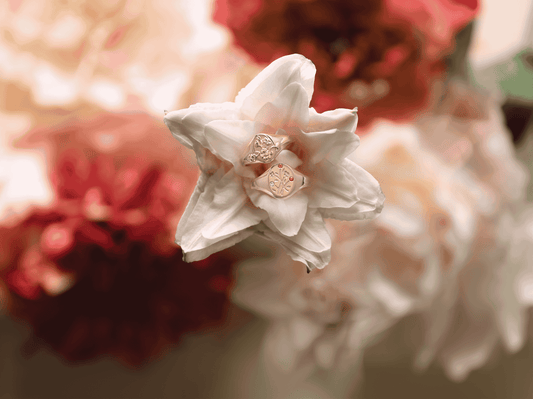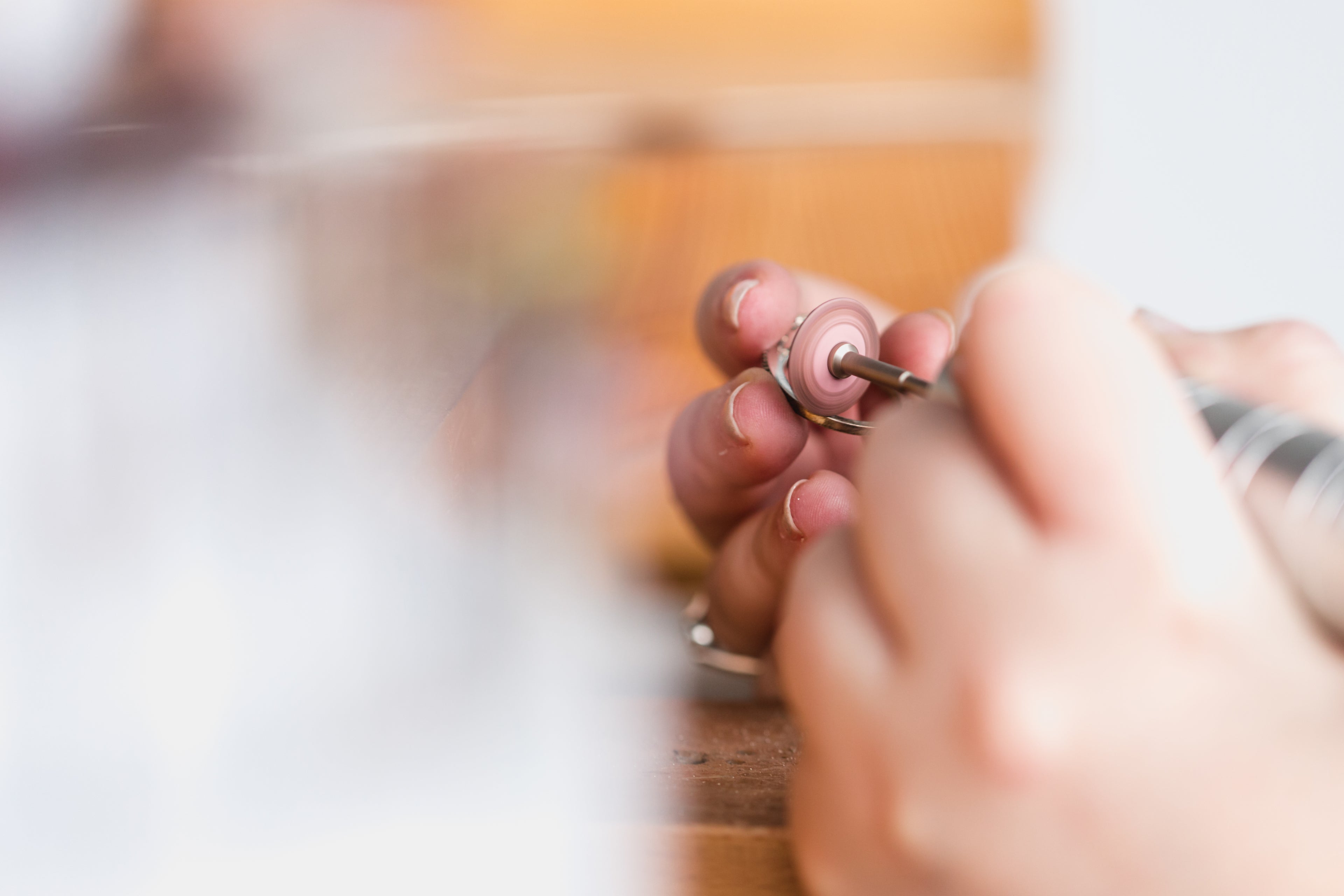The Ancient Impulse to Adorn
Long before we had written language, we had jewelry.
Shells strung with sinew, stones etched with symbols, copper hammered into spirals—each one a quiet declaration of presence and belonging. Across every culture and era, humans have reached for ornament not just to beautify, but to communicate identity, role, belief, and memory.
A simple string of beads might have marked you as a healer. A carved ring could carry your seal of authority. A gold collar might serve as both decoration and passport. Jewelry was never mere decoration; it was meaning you could wear.
Even now, that instinct persists. We still reach for jewelry when we want to feel grounded, protected, remembered. It is comfort and expression, story and signal, something ancient inside us that still believes wearing a symbol helps us carry truth.
Jewelry Is Never Neutral
We don’t always mean to send a message, but our jewelry speaks for us anyway.
A delicate gold chain suggests restraint or refinement. A scatter of vintage stacking rings might hum with creativity, nostalgia, or a love of story. Even a simple pair of earrings can say, this feels like me today.
Jewelry doesn’t just reflect who we are. It shapes how others perceive us. It’s a visual shorthand for everything we carry—precision, romance, warmth, rebellion. And sometimes, it says something aspirational. Not quite who we are, but who we hope to become.
We may put on a necklace without much thought, but make no mistake, it always says something. The question is whether it’s saying what we want it to.
The Armor of Power and Presence
Throughout history, jewelry has also served as a declaration of power.
Crowns, signet rings, ceremonial chains—these weren’t accessories. They were symbols of sovereignty, status, and legitimacy. A ruler didn’t have to speak first, their jewelry did it for them.
Even today, we turn to jewelry when we need to feel fortified. A courtroom. A first date. A hard conversation. The ring we twist on our finger like a touchstone or the necklace we clasp like armor.
Jewelry can be gentle, yes. But it can also be a shield. A way of saying, I’m in charge. I belong here. I remember who I am.
Personal Style vs. Personal Brand
There’s a subtle difference between personal style and personal brand.
Style is intuitive. It lives in our memories, our senses, our private preferences. It’s what we reach for on the days we feel most like ourselves. Brand is more curated. It’s how we choose to be seen, how we shape perception, the version of ourselves we offer to the world.
Jewelry lives in the space between the two.
It’s the heirloom ring you wear with your work blazer. The bold pendant you bought to mark a personal victory. The mismatched earrings that feel a little mischievous and a lot like you. Jewelry can be deeply personal or consciously performative, and often both at once.
It bridges the gap between who we are, who we’ve been, and who we’re becoming.
Inherited Messages: Culture, Class, and Choice
So much of what we believe about jewelry comes from what we’ve seen before.
Maybe your mother saved her diamonds for special occasions. Maybe your grandmother wore a brooch every day like a badge of honor. Maybe jewelry wasn’t part of your world at all, and now you find yourself drawn to it without quite knowing why.
Cultural traditions, religious practices, class expectations, and even fashion magazines shape how we view adornment. What feels appropriate, what feels desirable, what feels extravagant or necessary or earned.
But jewelry can be inheritance, and it can be interruption. You might pass down a piece exactly as it was, or you might rework it into something that feels more honest to your life now. That too is legacy. That too is story.
When Jewelry Is the Message
Some pieces speak louder than others because we choose them to.
Madeleine Albright famously wore brooches as political punctuation. A spider when she was being watched. A balloon when she hoped for peace. Queen Elizabeth, subtle yet unmistakable, wore a brooch gifted by the Obamas during President Trump’s state visit.
Jewelry has always had this capacity: to stand in for words, to broadcast intent. Protest pieces. Diplomatic signals. Red carpet symbolism. A tiara worn not just for lineage, but for power.
Sometimes we wear jewelry because it’s beautiful. Sometimes we wear it to feel something. And sometimes, we wear it to say exactly who we are.
Choosing What to Say (And Who to Say It To)
Your jewelry is already saying something. The question is, do you like what it’s saying?
It might be whispering, I’m rooted. Or I’m starting over. Or I’ve grown since the last time you saw me.
Maybe it’s not even speaking to others, but to you. Calling you back to yourself. Reminding you of your strength, your softness, your style.
Jewelry is allowed to change as we do. It can evolve with us. It can celebrate us. It can remember us.
Some days, it speaks softly. Other days, it roars.
Designing a Symbol That Resonates
This is why I love custom work.
When someone comes to me for a design, we don’t start with what it should look like. We start with what it needs to mean. What memory or milestone it should carry. What version of you it’s meant to reflect or support.
What are you stepping into? What truth do you want to wear? What part of your story do you want to honor, reshape, or share?
Together, we craft a symbol. A signature. Something that feels like it belongs to you, and tells the world what matters most.
Let’s Build a Piece That Speaks for You
Your jewelry doesn’t just decorate you. It defines you.
Let’s make something that speaks in your voice—elegant, grounded, unforgettable.
Book a consult to begin your next true expression.





